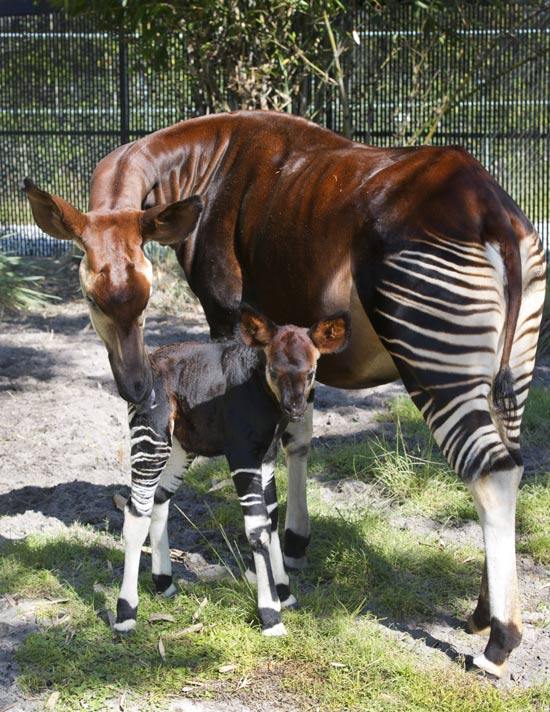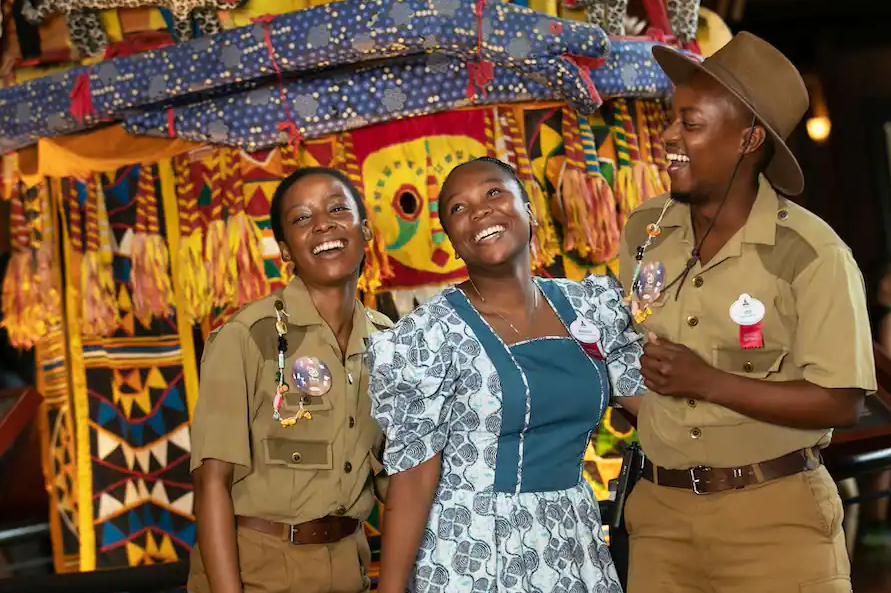
There are few Orlando Hotels that have the kind of square footage that allow for much landscaping, least of all their very own African savannas. This is one magnificent detail that really makes Disney’s Animal Kingdom Lodge and Animal Kingdom Villas stand out above all the rest. When my husband and I bought into Disney Vacation Club, we were terribly excited to find out that the Kidani Village’s Pembe Savanna would be home to an Okapi. The joke in our house is that this is “my Okapi” and it’s care and keeping is the reason we pay our monthly dues.
“The okapi with its white and black striped legs is often thought to be related to the zebra but actually is the only living relative of the giraffe. The stripes work as camouflage when hiding in the partial sunlight that filters through the forest canopy.” These beautiful creatures are considered quite rare and classified as near threatened due to habitat loss and hunting for their visually stunning, velvety coats and meat. “Okapi are typically solitary animals, living alone or in mother-offspring pairs. They are extremely wary and secretive.” Their discover by Europeans is just over 100 years old, and prior to it they were likened to an African Unicorn.
Well, I’m more than please to say that this lovely Okapi of “mine” on the Pembe Savanna is now a brand new mother! The sweet little calf was born on October 1st, she and the animal care specialists say that she and mom are doing well. We’re so excited that Disney’s Animal Kingdom breeding programs continue to be successful in contribute to the overall well being of so many rare animal species. Now you can have your very own Okapi too! As long as you don’t mind it living in Kidani Village.
Next time you’re visiting the Walt Disney World Resort in Orlando, be sure to make a visit the newest little addition to the Pembe savanna. It is a wonderful opportunity for guests to gain an appreciation for this beautiful animal and view it in an exquisite mixed-species savanna habitat.
Resource: Disney Parks Blog
